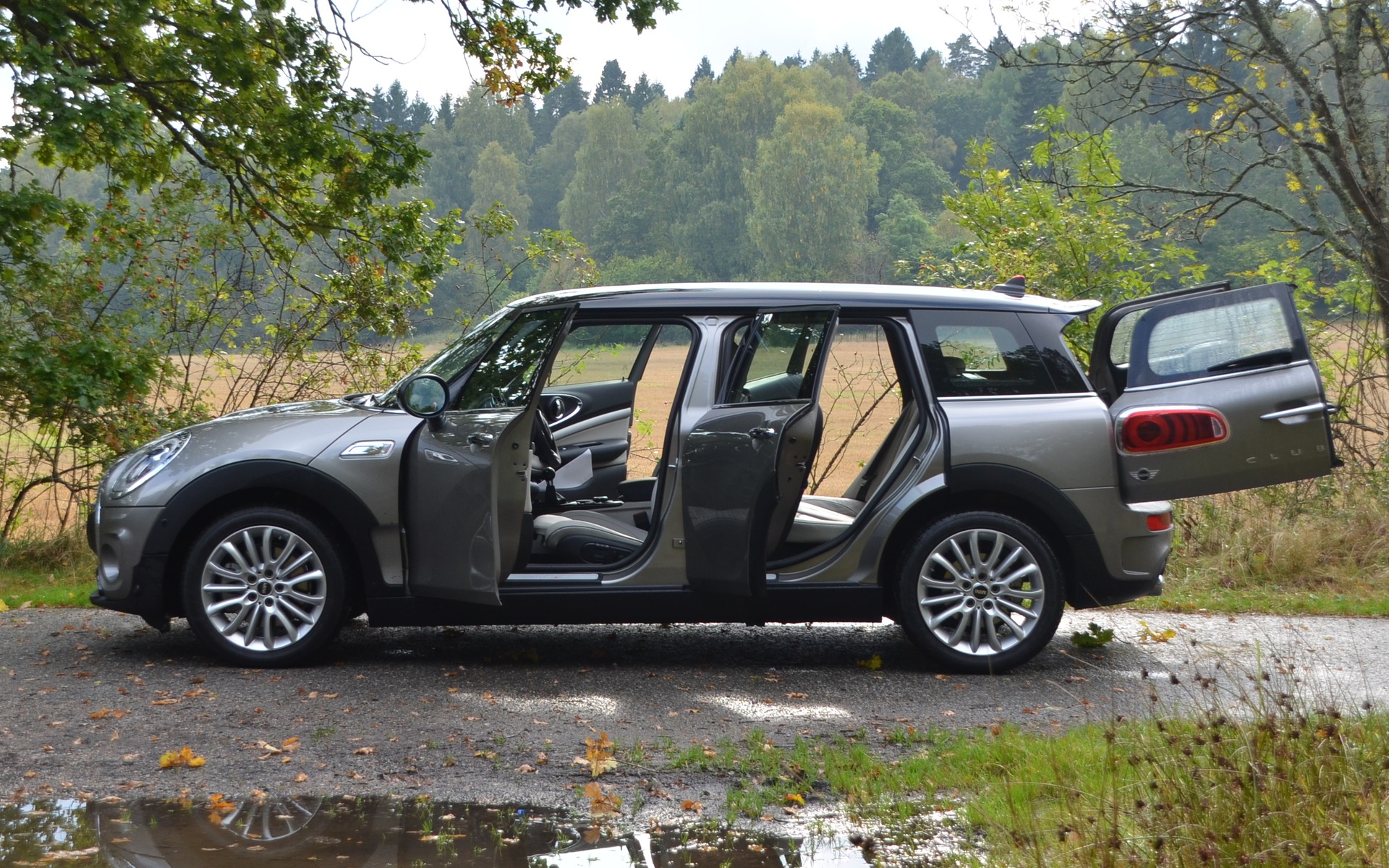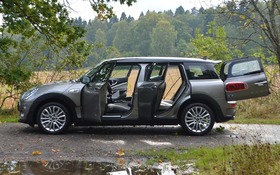2016 MINI Clubman: From MINI To Maxi

| Strong points |
|
|---|---|
| Weak points |
|
Until very recently, the MINI line-up was split into two distinct categories: the smaller cars (3-door Cooper, Cabriolet, Roadster and Clubman) and the bigger ones (Country, Clubman and Paceman). The addition of the 5-door last year changed all that, as this new vehicle infringed on Clubman territory. To rectify this, MINI decided to make some changes to the Clubman, making it their biggest vehicle yet. How big? Well, it’s almost the same size as the Volkswagen Golf. Will we soon see MINI challenging a Passat?
So what about this hefty Clubman? Style-wise, the designers kept the same characteristic MINI lines, but made them longer in all directions. For example, the wheelbase has gone from 2,570 to 2,670 mm, the total length is up from 3,983 to 4,253 mm, and the vehicle width has expanded from 1,710 to 1,800 mm. And whereas the Clubman’s height was 1,426 mm, now it’s 1,441. The only parts it shares with the regular MINI are the rearview mirrors, door handles and the air intake in the hood.
Conventional doors at last!
As you might expect, the cabin has only benefitted from the increase in size. For instance, there’s way more elbow room than before, and since it comes with the same seats as the three- and five-door versions, the designers were able to fit a wider centre console. The dashboard maintains pure MINI tradition, but it’s less cartoonish than in the past and features a module with all of the various climate controls.
Astute observers will notice that the Clubman now has four conventional doors instead of a single rear-hinged door on the passenger size (a bizarre configuration if there ever was one!). This obviously makes it much easier to access the rear seats, though the opening still isn’t very big. Rear passengers get a decent amount of leg room, provided that the front passengers cooperate. Once the rear seat backs are folded down, the trunk is a good size (360 to 1,250 litres). That’s less cargo space than the VW Golf, but since the MINI wanted to remain the smallest in its class, they had to make some tough choices.
“Wanted to remain the smallest in its class.” Now, that’s not something you will read every day. Most cars aim to outsize their competitors.
Familiar drivetrain
Things look pretty familiar under the hood. The base engine is a 1.5-litre three-cylinder turbo that generates 134 horsepower and 162 lbs.-ft. of torque. Meanwhile, the Clubman S comes with a 2.0-litre four-cylinder turbo offering 189 horsepower and 207 lbs.-ft. of torque. MINI only brought the S out to the launch, which speaks volumes about the 1.5-litre mill. But before we become overly dramatic about it, remember that there are a lot of drivers who don’t feel the need to push their cars to the limit. Since they like the MINI for its looks, the 1.5-litre engine is perfect for their needs and ends up costing them less too.
But the 2.0-litre has much more spunk. Okay, by “more spunk” I don’t mean to suggest that it’s a powerful beast. It does its job with professionalism and without complaints. According to MINI, it can dart from 0-100 km/h in 7.2 seconds (7.1 with the automatic transmission).
Six or eight speeds
Speaking of transmissions, there are no surprises in this department either. The six-speed manual is a peach; the clutch is easy to modulate and just firm enough, while the gear lever is precise. The base trim comes with a six-speed automatic. We tested it in a Cooper a few months ago and found that it did a decent, albeit passionless, job.
The Clubman S comes with an eight-speed automatic. The last two gears are more to help with fuel economy than performance. Shifting is direct and immediate. It’s so good, you wonder why anyone would choose the manual. Unfortunately, the wheel-mounted paddles only come as part of the JCW Package, which adds $4,650 to your bill ($1,650 for the transmission and paddles – $1,500 if you choose the automatic transmission only – and $3,000 for the JCW Package). Careful now, don’t be fooled into thinking that the JCW Package will turn your MINI into a MINI JCW. It’s just an accessories package.
You don’t have to drive far to be reassured that the Clubman handles just like its MINI brethren, despite its larger size. The engineers haven’t tampered with the engine settings, transmissions or other mechanical organs. Since the Clubman is heavier, longer and wider, it feels a little less sporty. Or maybe it’s just more mature.
MINI personality intact
When you take corners enthusiastically, body roll is controlled effectively and the steering communicates information from the front wheels with uncommon jubilance. It’s hard to believe that it’s power steering. There’s no torque effect on the front wheels during sudden acceleration and if ever the driver lacks (a little) judgement, the various control systems work with the electronic differential to bring the vehicle back on track. The units we tested came with Dynamic Damper Control, which modifies the suspension damping and is well worth the $500 it costs.
As always at MINI, there’s a marked difference between the various driving modes. To change the settings for the engine, transmission and steering, use the small knob conveniently located at the base of the gear lever. Eco mode is something you’re likely to ignore, Normal mode is fine and Sport mode is…well…it’s pretty much where you want your MINI to be at all times!
When MINI unveiled the 5-door last year, they warned journalists not to confuse it with the Clubman. That’s definitely not going to be a problem going forward.
The MINI Clubman is expected at dealerships next January. The regular Clubman will retail for $24,490 and the S for $28,990.











